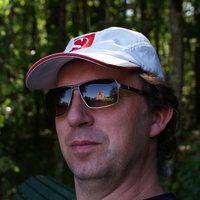Maarten Delbeke
Swiss Federal Institute of Technology (ETH), D-Arch, Faculty Member
- Ghent University, Architecture And Urban Planning, Faculty Memberadd
- Art Theory, Baroque art and architecture, Architectural Theory, Architectural History, Architecture, Early Modern Architecture, and 37 morePilgrimage Architecture, Miraculous Images, Materiality (Anthropology), Eighteenth Century Studies, Antiquarianism in the seventeenth century, Antiquarianism in the eighteenth century, Counter-Reformation, Renaissance antiquarianism, 17th-Century Studies, Books of Hours, Architecture and Urban Planning, Visual And Material Rhetoric, Baroque to Neobaroque, Urbanism of Rome, Francesco Gualdi, Monumentality, Roma Interrotta, Robbrecht En Daem Architects, Nolli Map of Rome, Emblematic Architecture, Alexander VII, Wylie Sypher, Complexity and Contradiction In Architecture, Pilgrimage, Winckelmann, Counter-Reformation art, Pirro Ligorio, Joseph Rykwert, comte de Caylus, Adam's House in Paradise, Primitive Hut, Dominique Bouhours, Early Modern Church History, Material culture of religion, Topography and Urban History of Rome, Wax sculpture, and Sforza Pallavicinoedit
Research Interests:
Research Interests:
Research Interests:
Research Interests:
Research Interests:
Research Interests:
Research Interests:
Research Interests:
Research Interests:
Research Interests:
Research Interests:
Research Interests:
Research Interests:
Research Interests:
Research Interests:
Research Interests:
Research Interests:
Research Interests:
Research Interests:
Research Interests:
Research Interests:
Research Interests:
Research Interests:
The conference concludes a research program at the Leiden University Centre for the Arts in Society (LUCAS) supported with generous funding from NWO, that aimed at understanding how, between 1750–1850, changing views about the origins of... more
The conference concludes a research program at the Leiden University Centre for the Arts in Society (LUCAS) supported with generous funding from NWO, that aimed at understanding how, between 1750–1850, changing views about the origins of civilization and the arts have affected the theory and practice of architecture in Europe. More in particular, the project aimed to understand how these views of origins, and especially the primitivism they often imply, have been adopted in architectural discourse to buttress the legitimacy of architecture in society.
The conference will take place in the Rijksmuseum van Oudheden at Leiden. The questions it wishes to address include: how do architectural origins relate to questions of architecture’s legitimacy as an artistic and cultural practice in the period under consideration? Why are origins deemed relevant to address these questions? To which particular architectural problems does the question of origins pertain? With which intellectual contexts and debates do architectural theory and practice enter in dialogue through the matter of origins? How do architectural origins relate to the primitivism that is manifest across a wide range of intellectual and artistic practices of the period? How do notions about origins sustained in historiography writ large affect architectural history and ideas about the historicity of buildings?
The conference will take place in the Rijksmuseum van Oudheden at Leiden. The questions it wishes to address include: how do architectural origins relate to questions of architecture’s legitimacy as an artistic and cultural practice in the period under consideration? Why are origins deemed relevant to address these questions? To which particular architectural problems does the question of origins pertain? With which intellectual contexts and debates do architectural theory and practice enter in dialogue through the matter of origins? How do architectural origins relate to the primitivism that is manifest across a wide range of intellectual and artistic practices of the period? How do notions about origins sustained in historiography writ large affect architectural history and ideas about the historicity of buildings?
